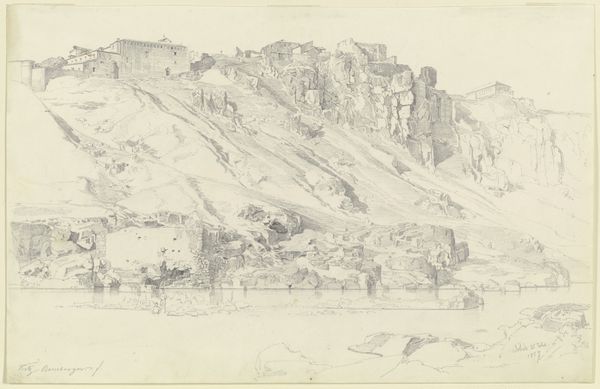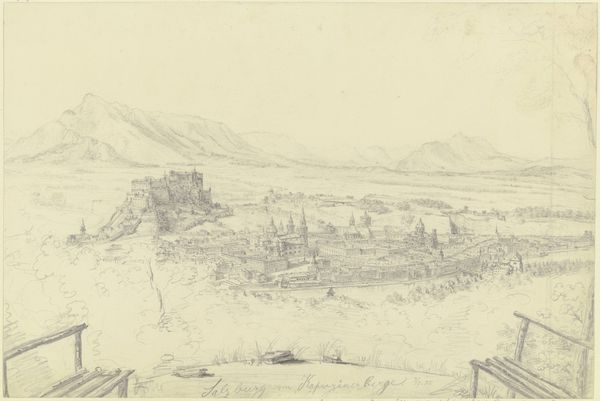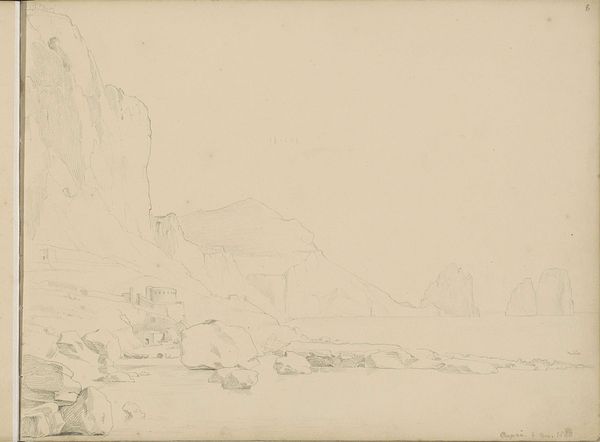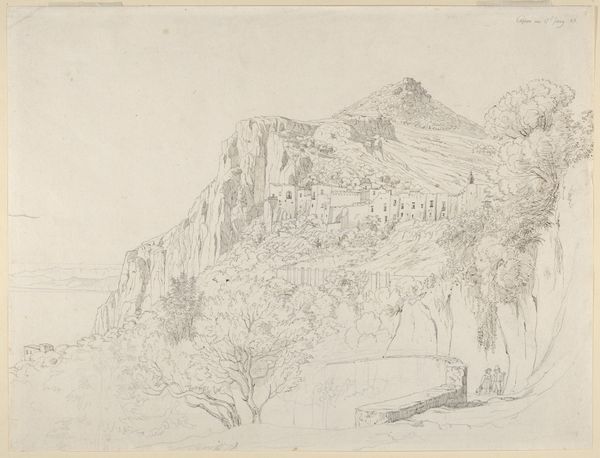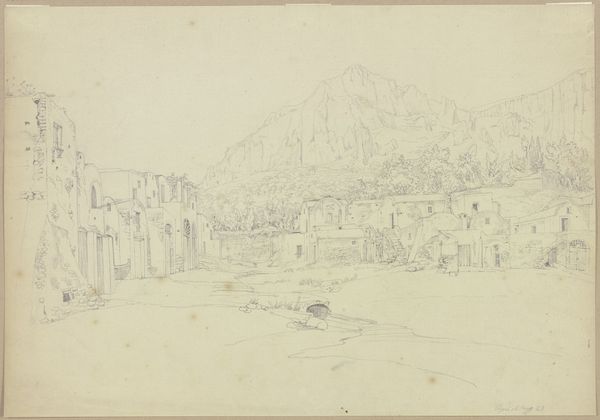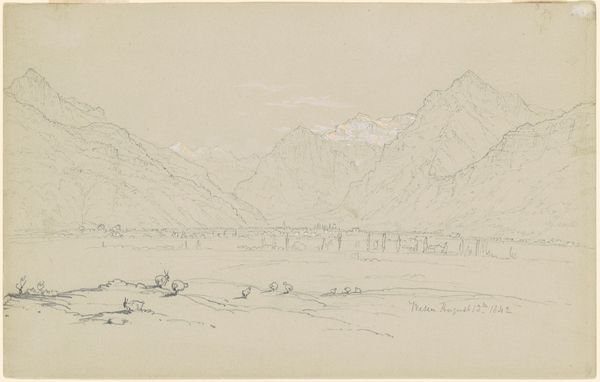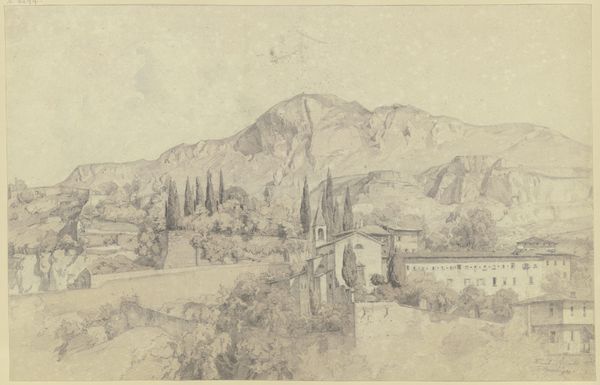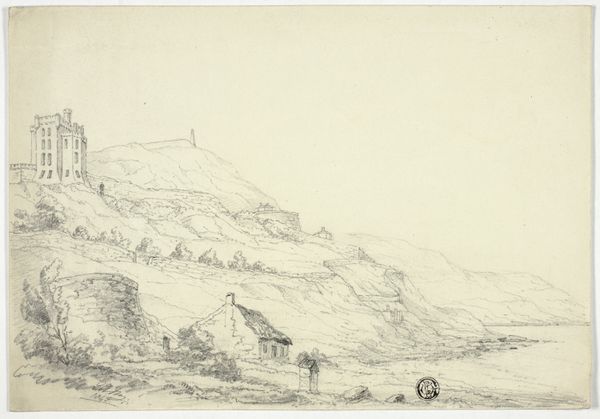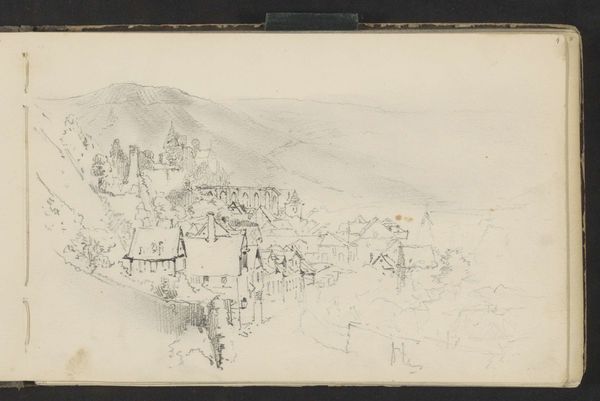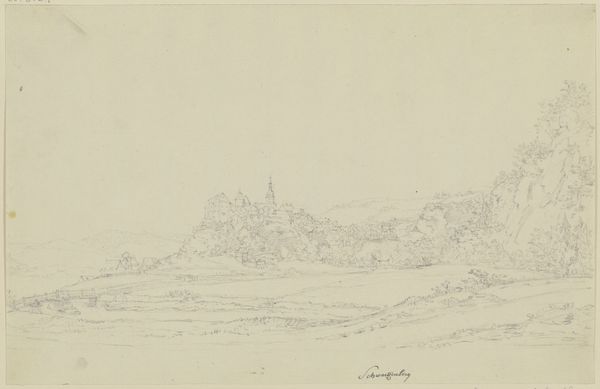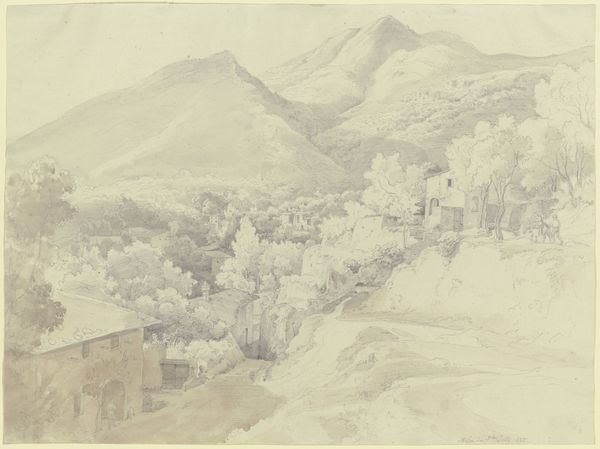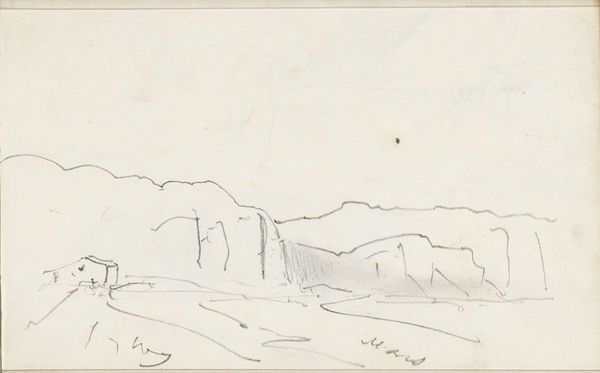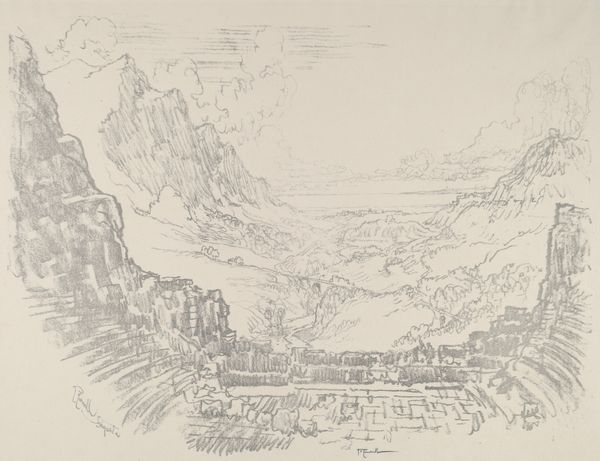
drawing, pencil
#
drawing
#
pen sketch
#
landscape
#
etching
#
romanticism
#
mountain
#
pencil
#
realism
Copyright: Rijks Museum: Open Domain
Curator: What strikes me immediately about this pencil sketch is the delicate, almost ethereal quality of the lines. There's a lightness that evokes a sense of peace. Editor: Indeed. We are looking at "Gezicht op Capri" – View of Capri – created around 1830 by Jacobus Everhardus Josephus van den Berg. This drawing captures a sweeping vista, typical of the Romantic era’s fascination with landscape. Curator: The composition is particularly interesting. The artist uses a subtle, almost tonal approach, building up forms with very light pencil strokes. Note how the eye is led from the foreground rooftops up to the distant mountains, creating a deep sense of space. The mountains themselves, outlined almost imperceptibly, evoke a sense of grandeur, wouldn't you say? Editor: Yes, and it’s crucial to understand the context. The early 19th century witnessed a rise in the Grand Tour phenomenon, where artists like Van den Berg travelled to picturesque locations like Capri. This drawing would've been viewed less as a finished work and more as a record, a kind of visual souvenir, and a reference point for future studio paintings. It reveals a European elite shaping their worldview through art and travel. Curator: I find the precision compelling, even in its subtlety. Consider the detailing in the buildings, or the way the artist suggests foliage with just a few strokes of the pencil. There's an impressive control over line and tone to achieve this realistic depiction using simple techniques. Editor: I agree that Van den Berg showcases skillful handiwork, but the very act of sketching the picturesque also played a part in framing Capri itself for future travellers, thus perpetuating a very specific view of Italy. Curator: That’s a salient point, reminding us that even the most seemingly straightforward depictions of landscape can be ideologically charged. Thank you. Editor: It is vital that we delve behind such attractive images, considering whose version of reality has become art history. Thank you for sharing your keen observations.
Comments
No comments
Be the first to comment and join the conversation on the ultimate creative platform.
